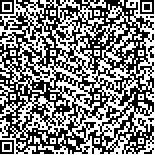袁文蓉,陈立娜,王华,等.呼吸肌训练联合反馈式呼吸电刺激对脑卒中患者肺功能及呼吸肌肌力的影响[J].中华物理医学与康复杂志,2022,44(11):989-993
扫码阅读全文

|
| 呼吸肌训练联合反馈式呼吸电刺激对脑卒中患者肺功能及呼吸肌肌力的影响 |
|
| |
| DOI:10.3760/cma.j.issn.0254-1424.2022.11.006 |
| 中文关键词: 脑卒中 呼吸肌训练 电刺激 肺功能 呼吸肌肌力 |
| 英文关键词: Stroke Respiratory muscle training Electrical stimulation Pulmonary function Respiratory muscle strength |
| 基金项目: |
|
| 摘要点击次数: 4370 |
| 全文下载次数: 5054 |
| 中文摘要: |
| 目的 观察呼吸肌训练联合反馈式呼吸电刺激对脑卒中患者肺功能及呼吸肌肌力的短期影响。 方法 采用随机数字表法将60例脑卒中患者分为观察组及对照组,每组30例。2组患者均给予常规康复干预,观察组在此基础上辅以呼吸肌训练及反馈式呼吸电刺激治疗,每周治疗6 d,持续治疗3周。于治疗前、治疗3周后对2组患者肺功能及呼吸肌肌力进行测定,同时采用躯干功能障碍量表(TIS)、改良Barthel指数量表(MBI)、疲劳严重度量表(FSS)对2组患者躯干控制能力、日常生活活动(ADL)能力及疲劳程度进行评定,并对比治疗期间2组患者卒中相关性肺炎(SAP)发生率。 结果 治疗后2组患者用力肺活量(FVC)、第1秒用力呼气容积(FEV1)、最大通气量(MVV)、峰值呼气流速(PEF)、最大吸气压(MIP)、最大呼气压(MEP)及TIS、MBI评分均较治疗前明显提高(P<0.05),FSS评分均较治疗前明显降低(P<0.05),除MBI评分外观察组其余各项指标结果均显著优于对照组水平(P<0.05),治疗期间2组患者SAP发生率组间差异无统计学意义(P>0.05)。 结论 持续3周的呼吸肌训练联合反馈式呼吸电刺激治疗能有效改善脑卒中患者肺功能、呼吸肌肌力及吸气肌耐力,有助于患者获得更好的咳嗽能力、躯干控制能力并缓解其疲劳程度。 |
| 英文摘要: |
| Objective To observe any short-term effect of combining respiratory muscle training with feedback respiratory electrical stimulation on the pulmonary function and respiratory muscle strength of stroke survivors. Methods Sixty stroke survivors were randomly divided into an observation group (n=30) and a control group (n=30). Both groups were given conventional rehabilitation 6 days a week for 3 weeks, but the observation group also received respiratory muscle training with feedback electrical stimulation. Before and after the treatment, both groups′ pulmonary functioning and respiratory muscle strength were measured, and also their trunk control, skill in the activities of daily living and fatigue level. The trunk impairment scale (TIS), modified Barthel index (MBI) and fatigue severity scale (FSS) were used. The incidence of stroke-associated pneumonia (SAP) was also compared between the two groups. Results After the treatment, average forced vital capacity, forced expiratory volume in 1 second, maximum voluntary ventilation, peak expiratory flow, maximum inspiratory pressure, maximum expiratory pressure, as well as the average TIS and MBI scores of both groups had improved significantly, and there was a significant decrease in the average FSS scores. After the intervention, all of the average measurements of the experimental group were significantly better than the control group′s averages except their MBI scores. There was no significant difference in the incidence of SAP. Conclusions Three weeks of respiratory muscle training combined with electrical stimulation feedback can effectively improve the pulmonary function, respiratory muscle strength and inspiratory muscle endurance of stroke survivors, resulting in better coughing ability, trunk control and reduced fatigue. |
|
查看全文
查看/发表评论 下载PDF阅读器 |
| 关闭 |
|
|
|